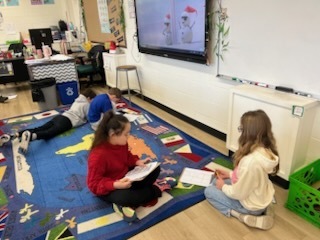Carmela Sill’s ES kindergarteners recently had a fun time some great fine motor skill practice work using cotton balls and clothespins to make “melted snowmen.” Everyone is unique!

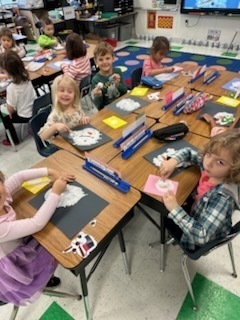


Kara Welsh's Otisville fifth-grade art students have been creating gorgeous, vibrant watercolor mandalas inspired by the sand mandalas of the Tibetan Monks and the Aztec calendar.
A mandala, the Sanskrit word for “circle,” is a circular, geometrical design with repetitions of patterns, symbolizing the cyclical nature of life and the idea that everything is connected. All lines and shapes are organized around a singular, central focal point, which can be understood as a map of the pathway between the external and the internal.





Jenn Kemmerer’s, Cheryl Wilson’s and Jessica Venettozzi's IS fourth-graders recently visited each other’s classrooms to see their outstandingly creative New York State Native American dioramas. Students displayed their work as their peers stopped by their desks to ask questions.
Students were tasked with designing and building either a longhouse or wigwam to show their specific understanding of Iroquois an Algonquian housing. As part of their project work, students were also tasked with writing about their home, who lived in t and other details. While this was a student-centered home project, families were encouraged to also take part!
Building a longhouse or wigwam is much more than just a creative project. This project helps students understand how Native American tribes adapted their housing to their environment and lifestyle, particularly the importance of communal living in a longhouse for large families and the flexibility of a wigwam for nomadic tribes who needed to move frequently depending on food sources. It teaches them about the practical reasons behind different types of shelters based on the needs of the people who built them.






Nichole Gaucher’s and Toni McGinn’s High School Living Environment students are learning about body systems. During this recent class, students explored the respiratory system.
As part of their exploration, students selected and researched a respiratory system disease in order to learn how that disease can disrupt the body's homeostasis. In their research, students learned about the disease's symptoms, how to diagnose it and treat/cure it, what causes it and if it’s contagious. They also learned how this disease affects the respiratory system and its ability to help the body maintain homeostasis. Students created mini-posters to show their findings and participated in a gallery walk where they learned about the diseases their peers researched. Take a look!
In biology, "homeostasis" refers to the ability of a living organism to maintain a stable internal environment despite changes in its external surroundings, essentially keeping key bodily functions like temperature, fluid balance, and pH levels within a narrow, optimal range for proper functioning.
A gallery walk is a teaching strategy that involves students moving around a classroom to examine a collection of artifacts, texts, or student work. The goal is to engage students and help them learn and synthesize concepts.
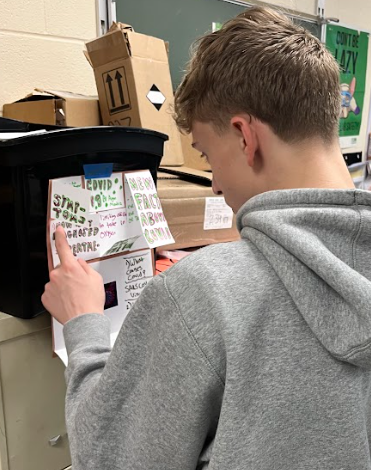




Thank you to the Otisville PTO, which sponsored a two -day “Earth Dome” enrichment program on Dec. 18 and 19!
The Earth Dome is a gigantic inflatable earth balloon standing 19-feet high and 22-feet in diameter. It's made of 24 huge panels silkscreened with photographs shot from satellites of the surface of the world on cloud free days. It has been used extensively across the U.S. to educate students about geography as well as environmental issues. The topics presented were appropriate for each grade level ---- ask your student about this!
Among other topics, students saw and better understood the scale of concepts such as continents, time zones, latitude, longitude, and more! Major cities, in comparison to the total Earth, were also recognized! What a great Geography and Earth Science program!






ALL ABOARD, TICKETS PLEASE!
Sherri Jennings’ Otisville kindergarteners “took” a train ride to the North Pole today, Dec. 19, on THE POLAR EXPRESS! They needed their punched ticket in order to board the train and enjoyed hot cocoa on their ride! Wearing PJs made the ride even more comfy!





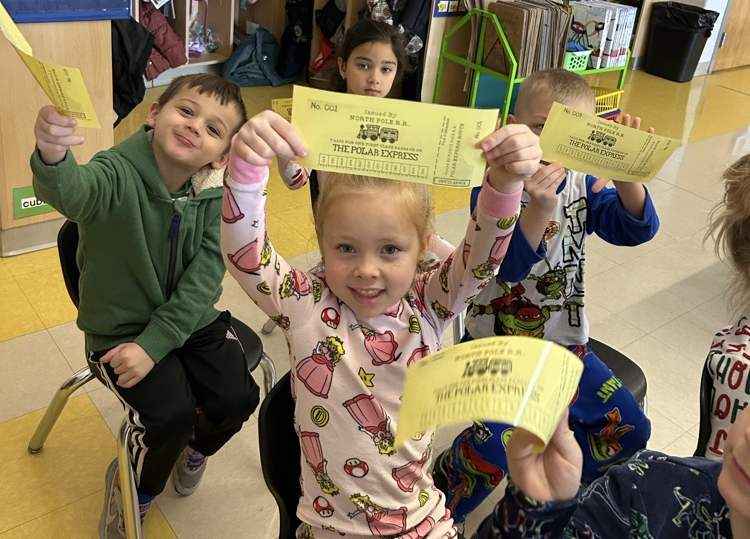

If you need help finding the perfect holiday ornament, ask Kimberly Jordan’s High School Biology students! They can definitely help!
Students were tasked with creating two ornaments, all created at home! The first was an organelle of a cell that they thought was most important; and the other was a cell type. All types of colorful and creative ornaments were created focusing on muscle cells, neurons, sex cells...and much more all showcasing the diversity within us and how organelles and types of cells keeps us alive. What a fun and creative twist to biology class!
An organelle is a subcellular structure that has one or more specific jobs to perform in the cell, much like an organ does in the body. Among the more important cell organelles are the nuclei, which store genetic information; mitochondria, which produce chemical energy; and ribosomes, which assemble proteins.
A "cell type" refers to a group of cells that share similar characteristics and functions within an organism, distinguished from other cell groups by their unique morphology, gene expression patterns, and specialized roles within the body. It’s essentially a classification of cells based on their distinct properties and what they do within the organism.








CAN A McDONALD’S HAPPY MEAL BE USED IN A LAB EXPERIMENT? YES!
Carolyn Russell’s and Jonathan Hannes’ High School Living Environment classes recently completed a very innovative “Mc Mush” lab! Students used a McDonald’s Happy Meal to test for the presence of organic compounds normally found in the body.
After the burger, fries, apples and drink were blended into a compound which was called a “McMush,” groups used chemical indicators like Benedict's solution, iodine, and Biuret reagent to test for carbohydrates, lipids and proteins in their samples. Remember, the term “organic” in science indicates that a compound contains carbon which is very different from the organic choices at the grocery store. (Who kept the Happy Meal toys? We don’t know!)
Every student led their group through an experiment and determine if McMush had the organic compound in question!
Believe it or not, a standard McDonald’s Happy Meal has some nutritional value because three biomolecules are present in the meal. The starch, protein and lipids found in the Happy Meal solution are three biomolecules essential for nutrition. These biomolecules are crucial for bodies because they provide an important source of energy, storage for minerals and to build and repair muscles. Without them, it can lead to lack of metabolism, hormones, energy and blood sugar.
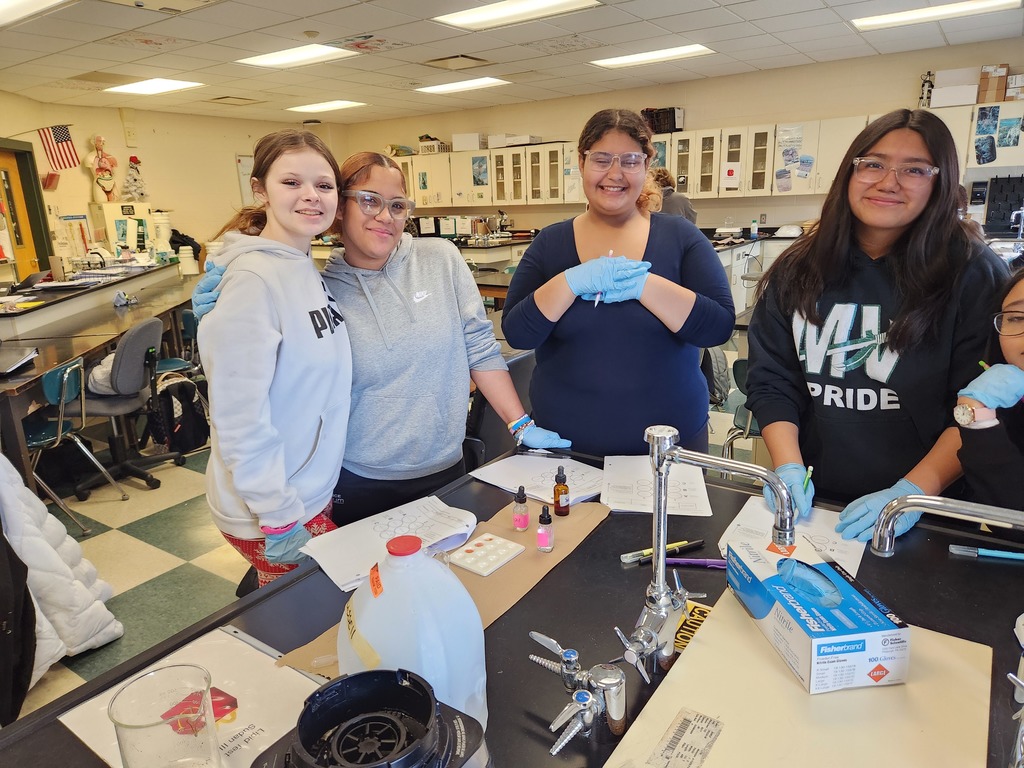


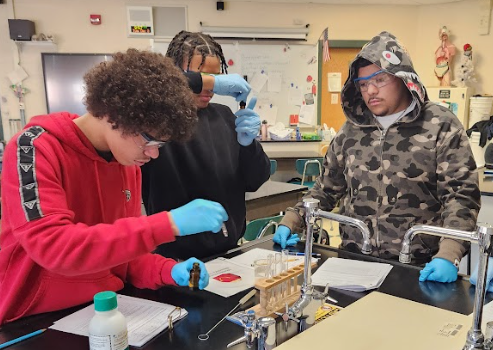
LITERACY LESSONS TIED TO SEASONALITY
Like all district kindergarteners, Lindsey McKernan’s ES kindergarteners are learning about “tricky words” and realizing that tricky words are those that do not "play by the rules!" Making candy canes and adding a variety of tricky words to their art work is a fun way to practice reading, writing and remembering those tricksters!




Thank you to everyone who participated in today's "Operation GIVEBACK" at the Middle School! Take a peek at some of the fun work done by students who made holiday cards for veterans, scarves for the Middletown Warming Station, pine cone bird feeders and ornaments for a local nursing home! Your kindness makes a HUGE difference in the lives of others!


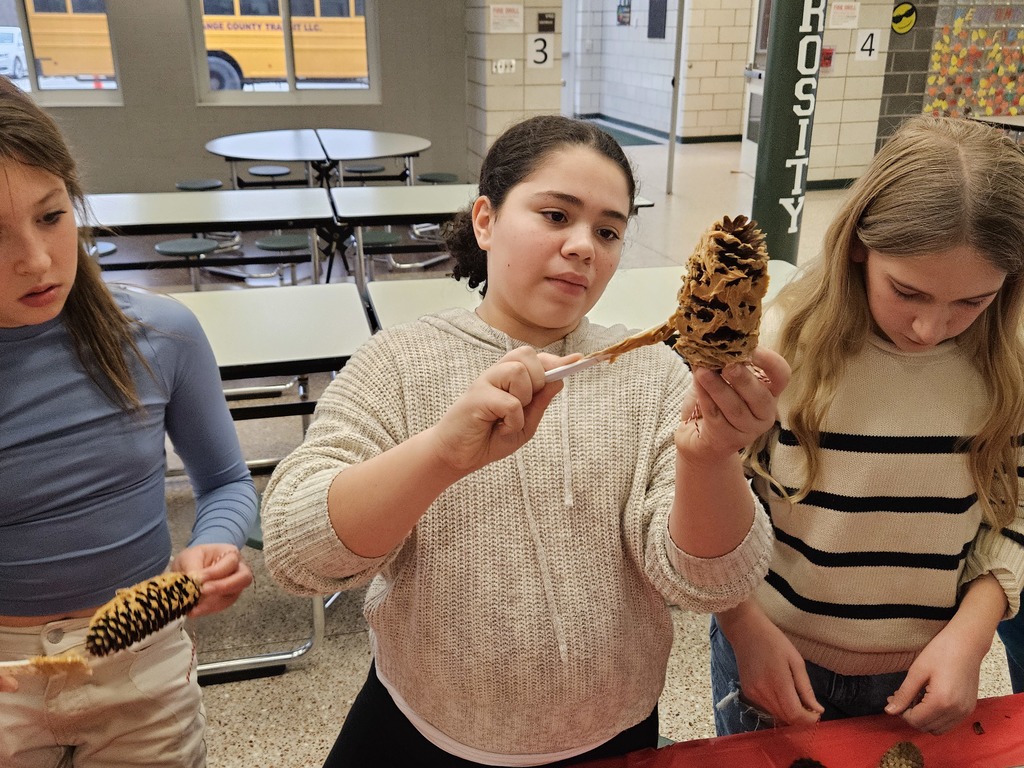



Did you know that dominoes can be used in short STEM challenges to teach students about energy transfer, chain reactions and critical thinking? Just ask Teresia Parker’s and Jill Stramiello’s Middle School technology students!
The teachers have used dominoes as part of their "do now" or "anticipatory set" activities at the beginning of lessons. The intent is to immediately engage students, activate their prior knowledge about a topic, and mentally prepare them for the new information that will be presented. This is essentially setting the stage for the lesson by grabbing their attention and connecting them to the upcoming material.
Dominoes are perfect because they provide a hands-on, engaging way to explore fundamental concepts life force, motion, cause and effect and problem solving. Designing and building complex domino runs requires students to plan, analyze, and adjust their designs based on trial and error, promoting critical thinking and problem-solving abilities.






Deanna Feuerbach’s IS fourth-grade music students have been having a great time using boomwhackers in class, which includes using them for holiday song play-along videos!
Boomwhackers are percussion instruments that are lightweight, color-coded plastic tubes that are tuned to different musical pitches. They are tuned to a C Major scale.
Each student is given a different colored pitch, and must wait their turn to play their note when it appears on the screen. The students are able to perform together as an ensemble to create music which helps enhance social skills and work towards a common goal.
Boomwhackers are a popular instrument in elementary music classrooms because they’re a fun and engaging way to teach music concepts such as rhythm and pitch, harmony and melody as well as timing, focus and concentration, teamwork, collaboration and hand-eye coordination.
Craig Ramsell invented the instrument in 1994 while cutting down a cardboard gift-wrap tube for recycling. He noticed the different tones produced by the two pieces of the tube and realized he could tune them to play music. Ramsell experimented with different plastics, eventually settling on plastic mailing tubes. He and his wife created the first plastic model in 1995.




The Elementary School kindergarten team held its annual "Holidays Around the World" program today, Dec. 17, where students visited different classrooms to learn about holidays and customs in Israel, Switzerland, Ireland, Italy, Germany, Australia and Mexico!

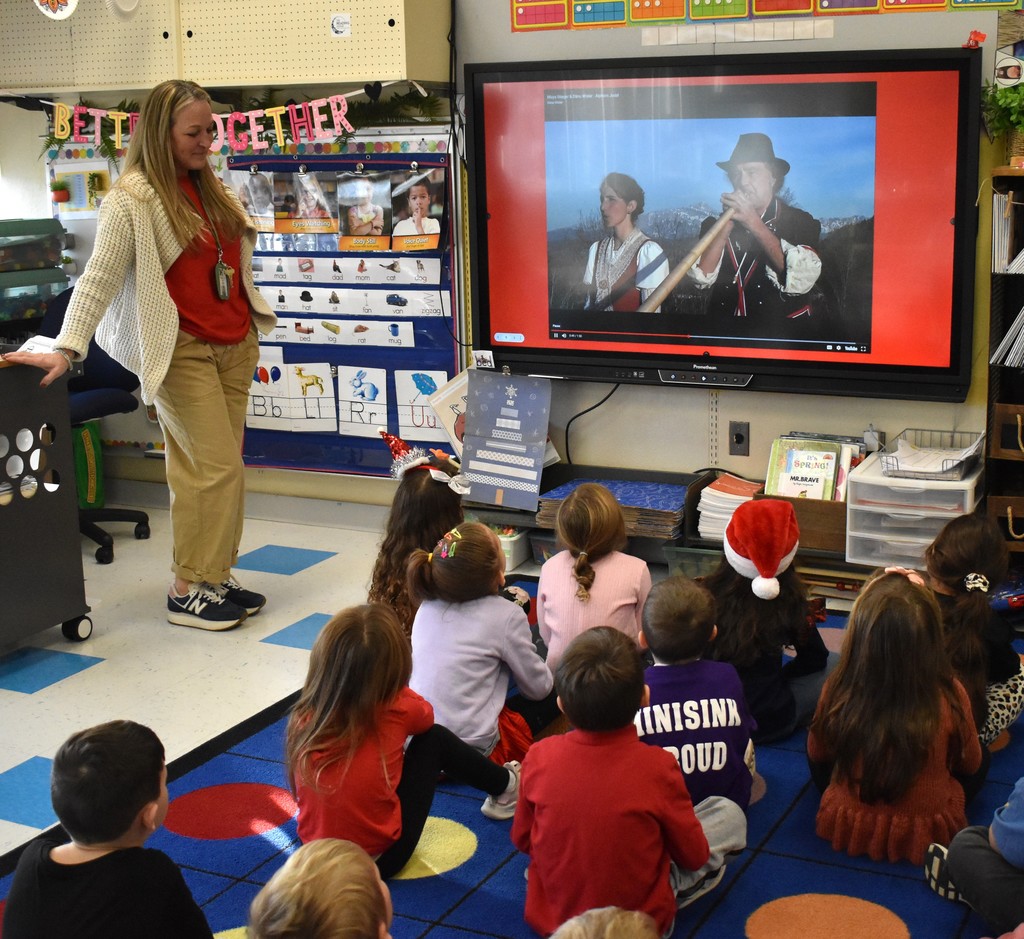






Skyler Klein’s Otisville fourth-grade music students learning how to apply literacy skills to instruments using George Bizet’s "The Carillon Ostinato."
They used different instruments to discover how timbre changes can impact performance. Soon, students will be arranging "The Carillon Ostinato" to create their own version!
Applying literacy skills to instruments, also known as "musical literacy," is important because it allows musicians to understand and interpret musical notation, enabling them to play a piece of music independently, communicate effectively with other musicians and develop a deeper understanding of the music they are performing, essentially giving them the ability to "read" music just like reading written language!

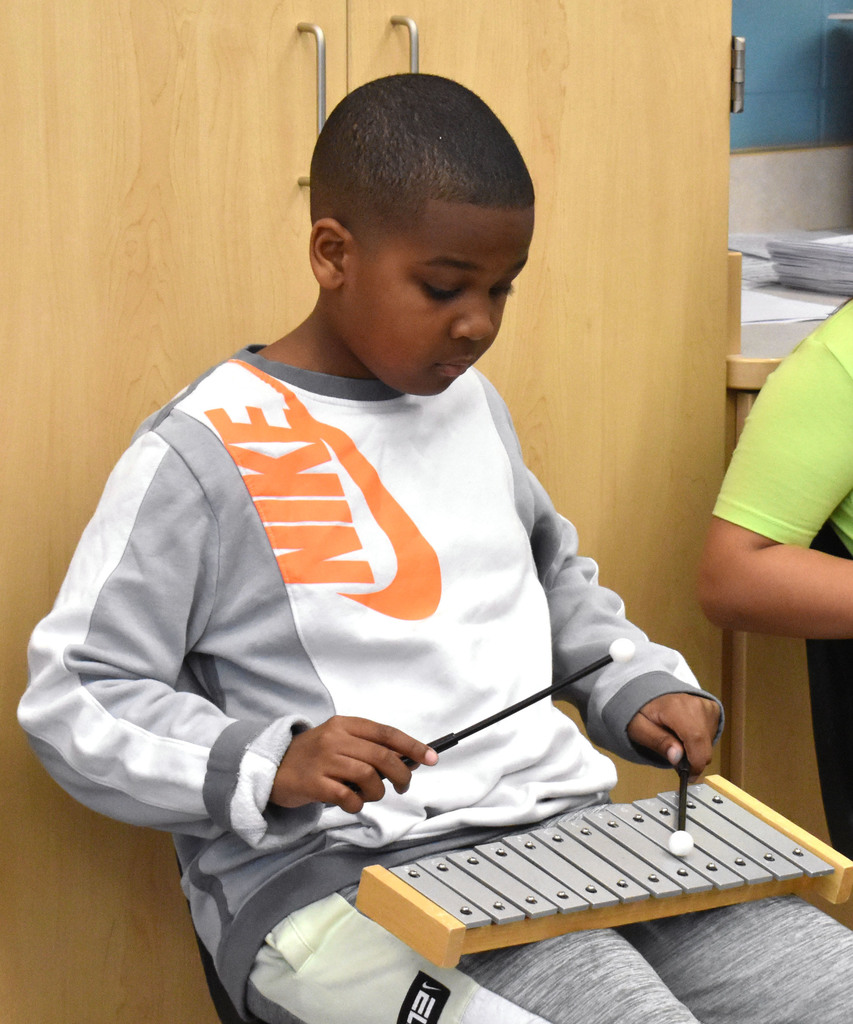

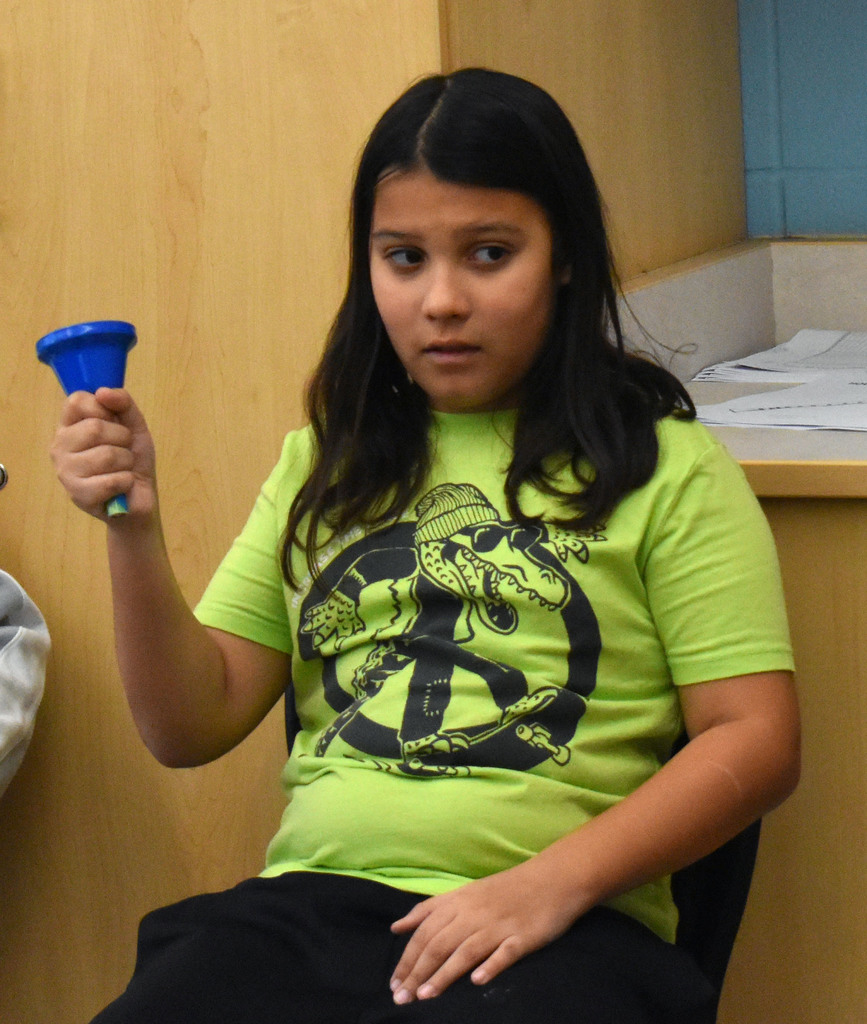
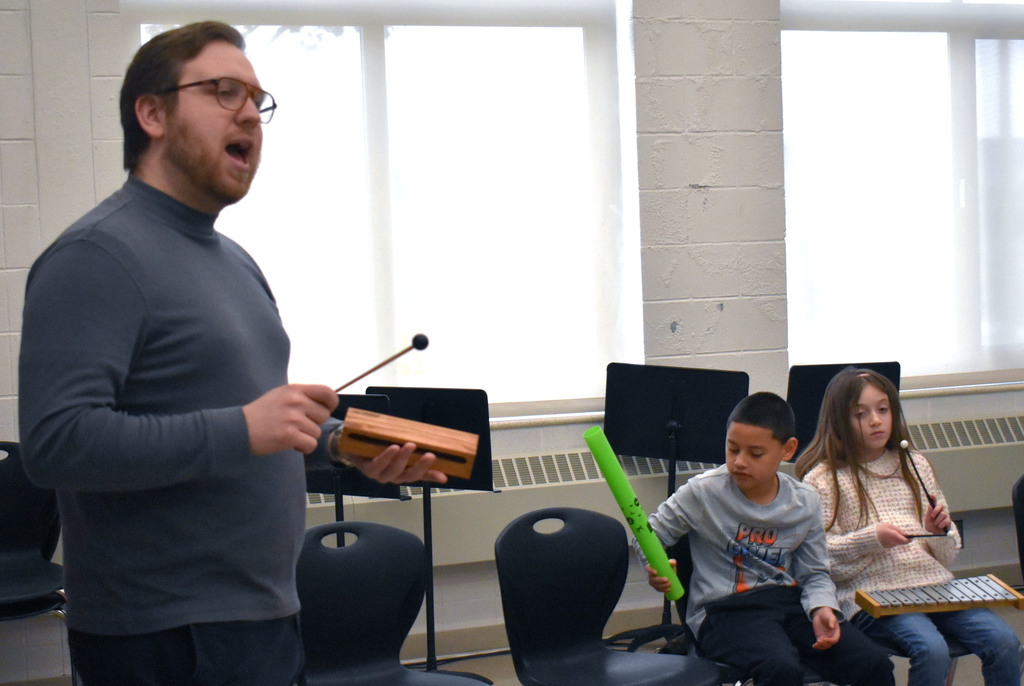
FUN FACT: Board games are not just for playing and Oreos are not just for eating; they’re used for creative learning, too!
Andrea Ferguson’s and Jaclyn Lockett’s sixth-grade science classes have been learning about plate tectonics and how the plates move. In stations, students played Pictionary to review their vocabulary terms (divergent, convergent, transform and convergent boundaries) and manipulated Oreo cookies to show how the plates can move and the features that can be produced (mountains, rift valleys, and volcanoes). What a fun and creative way to learn! (And, of course, the Oreos were devoured afterward)
•Divergent boundaries happen when plates move apart, creating new crust and magma. This can happen on continents or in the ocean, where it can form mid-ocean ridges and islands. The Mid-Atlantic Ridge is an example of a divergent boundary.
•Convergent boundaries happen when plates move toward each other, and one plate often slides beneath the other in a process called subduction. This can create mountains, volcanoes, earthquakes, and other geological events. The Pacific Ring of Fire is an example of a convergent boundary.
•Transform boundaries happen when plates slide past each other horizontally. This doesn't create or destroy crust, but they can cause earthquakes and pulverize rocks along the boundary. The San Andreas Fault in California is an example of a transform boundary.





“Directed drawing” is a really cool classroom activity! Take a peek at Stacy Lozupone’s ES kindergarteners, who are using this assignment to refine their skills related to following directions, impulse control and frustration tolerance while have a really fun time….to make awesome yetis! (A yeti looks like a big, fluffy, white snowman with really long, shaggy fur, kind of like a giant, hairy bear that lives in the snowy mountains, and is so big you might only see its big footprints in the snow!)
What made it even more exciting was a special visit by Occupational Therapist Julie Barrett who assisted some students with their occupational therapy work!
"Directed drawing" in kindergarten is a teaching method where a teacher guides students step-by-step through the process of drawing a picture, providing specific instructions on where to place lines and shapes, essentially breaking down the drawing into manageable parts to help young children learn basic drawing skills and follow directions.




Nicole Lee’s and Jackie Lockett’s sixth-grade students recently took part in a very cool three-part lesson focusing on plate tectonics!
First, students create oversized Pangaea maps in groups, then independently completed a “vocabulary quilt” featuring various terminology.
Then they picked one term and its definition and drew on a mini-puzzle piece, making certain their pictures represented the term and two key words that were in the definition.
Lastly, students competed by having to put together other students' puzzles and guessing the vocabulary word. They kept track of the words and keywords on a travel sheet which then became their study guide.
Students also had a parallel lesson with science pixel art, completed web and scavenger hunts, and “moved” as the plates did. They guessed what was in the “mystery bags” to support phenomena and indirect evidence... they were gummy eyeballs!
•Plate tectonics is the theory that the Earth's crust is divided into large, moving pieces called "tectonic plates" which float on a semi-liquid layer beneath them, causing earthquakes, volcanoes, and the formation of mountains when they collide with each other.
Essentially, the Earth's surface is not solid but made up of puzzle pieces that are constantly shifting around, shaping Earth over time.
•Pangaea was a supercontinent that existed between 300 and 200 million years ago, when all the continents were joined together. The name Pangaea comes from the Greek word “pangaia,” which means "all the Earth.”
•Pangaea is tied to plate tectonics because the theory of plate tectonics explains how the supercontinent Pangaea formed, broke apart, and continues to influence the movement of continents today.





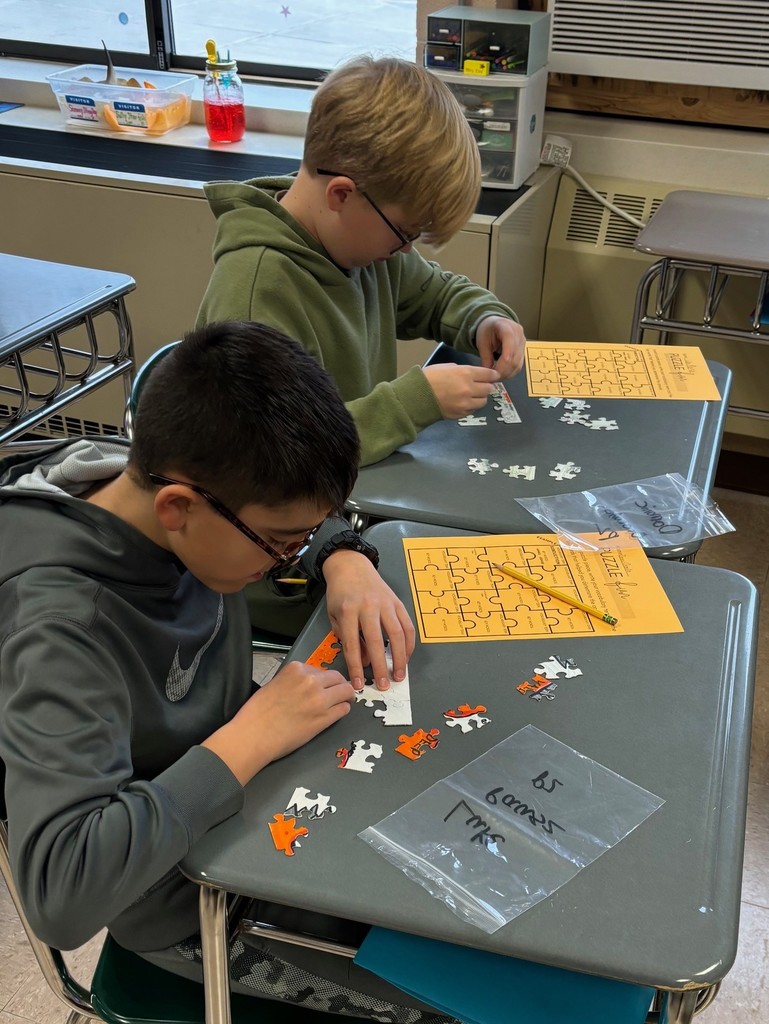
Angela Dombal’s and Bridget Kelly’s ES kindergarteners are learning about two and three-dimensional shapes as part of their module on this topic. They used toothpicks and marshmallows to construct a solid shape from a square base. What a fun STEM lesson!
Why is this important? Teaching two and three-dimensional shapes in kindergarten is important because it helps young children develop foundational spatial reasoning skills, which are crucial for future math concepts. This work also enhances visual perception, aids in recognizing letters and numbers, and provides a basis for understanding the world around them through everyday objects with different shapes; essentially laying the groundwork for more complex geometry work as their academic careers advance.





Thank you to everyone who contributed to Otisville Elementary and BOCES Otisville Satellite’s annual Scholastic Great Bedtime Book Pajama Drive! The numbers of pajama sets collected was simply amazing!
Plus: How fun is this? In even more seasonal spirit, each Otisville and BOCES Otisville class decorated its own “Gingerbread Pajama Person!” These colorful and creative pieces of art are on display in the school’s cafetorium. Take a peek at these creations, with assistance from these cutie-pies!
The Scholastic Great Bedtime Story Pajama Drive is an annual event that collects new pajamas and books for children in need. Educators register their classrooms to collect pajamas from students between September and Dec. 6. Scholastic matches each pair of pajamas donated with a book! What a wonderful way to combine the warmth of pajamas with the gift of reading!








Scoot is a great game to play, particularly when it’s time for subtraction review!
Candace Gale and Cecilia Kosowicz’s IS third-graders recently paired up to work together on their subtraction review work! They did great work, by the way!
Scoot is a game that can be used to review or reinforce concepts in math and other subjects. The teacher places question cards around the room, and students move from one card to another answering questions. The game can be used to assess students in a variety of subjects, including math, language arts, and science.


